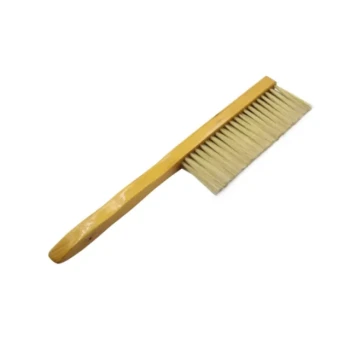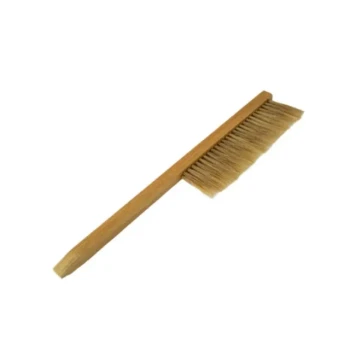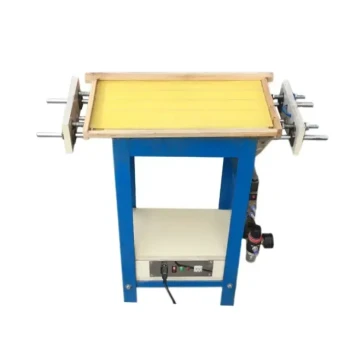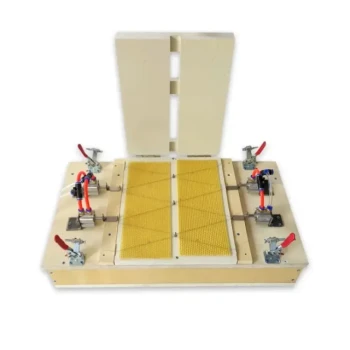In short, a typical pollen trap can collect between 30% and 70% of the pollen pellets from bees entering a hive. This wide range is not an accident; it reflects the significant variability in trap design, environmental conditions, and the specific goals of the beekeeper. The efficiency of any given trap is a direct result of balancing pollen collection with the fundamental needs of the honey bee colony.
The core issue isn't just the percentage of pollen a trap can collect, but understanding how trap design creates an intentional trade-off between maximizing your pollen harvest and maintaining the health and productivity of the hive.

How a Pollen Trap Functions
The Core Mechanism
A pollen trap operates on a simple but effective principle. It forces returning forager bees to pass through a screen or grid before they can enter the hive.
Scraping the Pollen
The openings in this screen are just large enough for the bee to squeeze through, but small enough to scrape the compacted pollen pellets from the "pollen baskets" on their hind legs.
Collection and Retrieval
These dislodged pollen pellets then fall through a mesh floor into a collection tray or drawer below, which prevents the bees from accessing and retrieving them. The beekeeper can then easily remove this tray to harvest the fresh pollen.
Factors Influencing Collection Efficiency
Screen Hole Size
This is the most critical design element. Smaller holes will scrape off more pollen, increasing your harvest percentage, but they can also slow down foragers and potentially damage their wings.
Pollen Pellet Size
The size and cohesiveness of the pollen pellets themselves play a role. Different plant sources produce different types of pollen, and some may be dislodged more easily than others.
Colony Traffic and Behavior
A strong, populous colony with a high number of foragers will naturally bring in more pollen, leading to a larger harvest. However, bees may also learn to avoid the trap or seek alternative entrances if the primary one becomes too difficult to navigate.
Understanding the Trade-offs
Maximizing Yield vs. Colony Health
Aggressively trapping pollen at the high end (near 70%) can deprive the colony of a critical food source. Pollen is the bees' primary source of protein, essential for raising brood and feeding young bees.
Stress and Foraging Disruption
Forcing every returning bee through a tight screen adds stress and can slow down the entire foraging operation. This can reduce the colony's overall efficiency, impacting not just pollen stores but also nectar collection for honey production.
Risk of Hive Damage
Poorly designed or improperly installed traps can physically harm the bees, leading to frayed wings and increased mortality. They can also create moisture and ventilation problems inside the hive if they are not managed correctly.
Making the Right Choice for Your Goal
Deciding how and when to use a pollen trap requires a clear understanding of your objectives.
- If your primary focus is maximum pollen harvest for commercial sale: Use a highly efficient trap, but only on your strongest colonies and for limited periods to avoid harming the hive long-term.
- If your primary focus is supplemental feeding or personal use: A less aggressive trap (collecting in the 30-50% range) is a much safer choice that balances your needs with the colony's health.
- If your primary focus is colony health and honey production: Avoid using a pollen trap altogether or use it only for very short durations (a day or two at a time) during peak pollen flows.
Ultimately, effective pollen trapping is an act of balancing extraction with the sustainable health of your colony.
Summary Table:
| Factor | Impact on Collection Percentage | Key Consideration |
|---|---|---|
| Screen Hole Size | Smaller holes increase collection (up to 70%) | Can stress bees and damage wings |
| Pollen Pellet Size | Varies by plant source | Some pollen types are dislodged more easily |
| Colony Traffic | Stronger colonies yield more pollen | High traffic can lead to avoidance behavior |
| Beekeeper's Goal | Commercial harvest vs. hive health | Balance extraction with colony sustainability |
Ready to find the perfect pollen trap for your operation?
At HONESTBEE, we supply commercial apiaries and beekeeping equipment distributors with high-quality, durable pollen traps designed for optimal performance and bee welfare. Our wholesale-focused operations ensure you get the right equipment to balance maximum pollen harvest with sustainable hive health.
Contact our experts today to discuss your specific needs and get a quote on our full range of beekeeping supplies!
Visual Guide
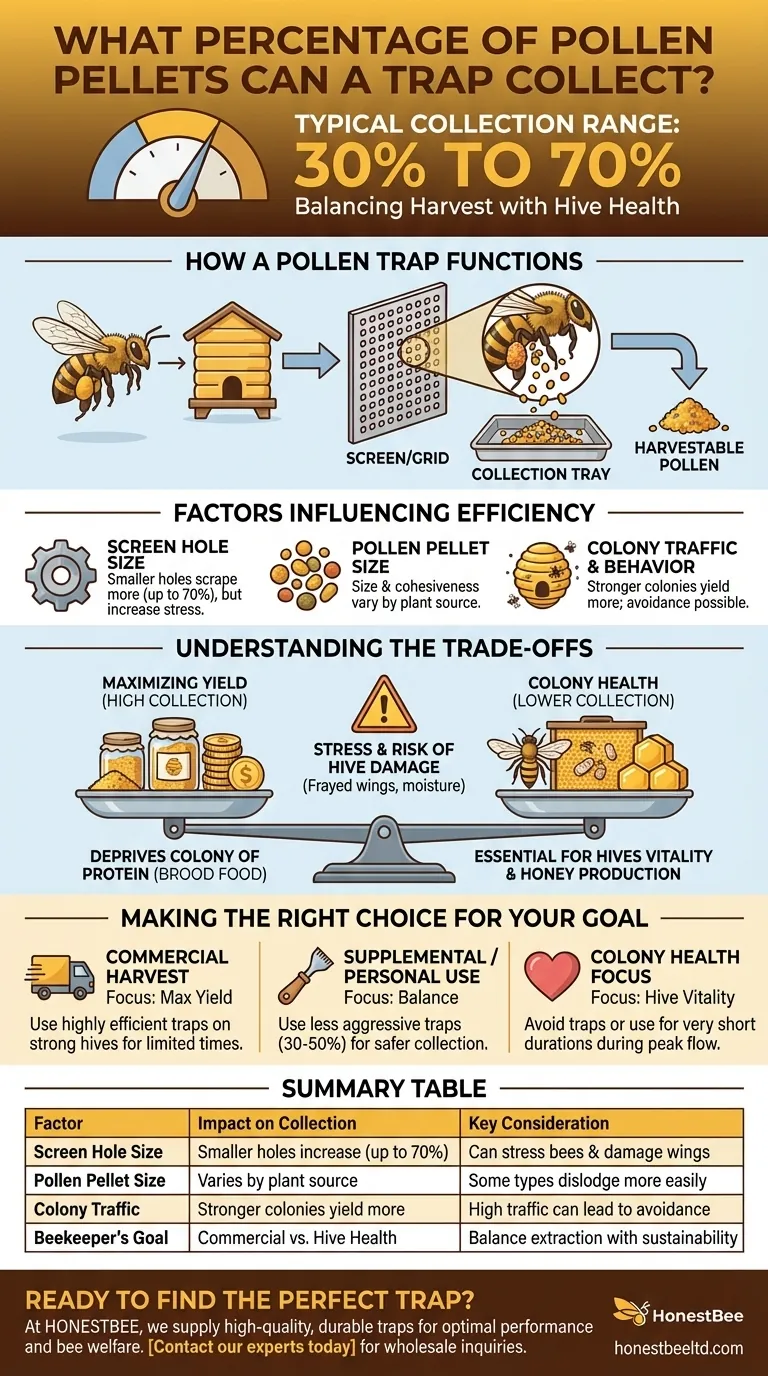
Related Products
- HONESTBEE Advanced Ergonomic Stainless Steel Hive Tool for Beekeeping
- Professional Dual-End Stainless Steel Hive Tool for Beekeeping
- Wooden Bee Brush with Triple Row Artificial Fiber for Beekeeping
- Professional Galvanized Hive Strap with Secure Locking Buckle for Beekeeping
- Classic Wooden Bee Brush with Double-Row Boar Bristles
People Also Ask
- What tools are used for cleaning frames? A Beekeeper's Simple 4-Tool Guide
- What are some common uses of a hive tool? Essential Multi-Purpose Tool for Every Beekeeper
- What is a hive tool and what are its uses? Master Your Hive Inspections with the Essential Beekeeper's Tool
- What are the features of a regular hive tool? The Essential Multi-Tool for Every Beekeeper
- Why is it important to compare the progress of different hives? A Beekeeper's Key Diagnostic Tool


